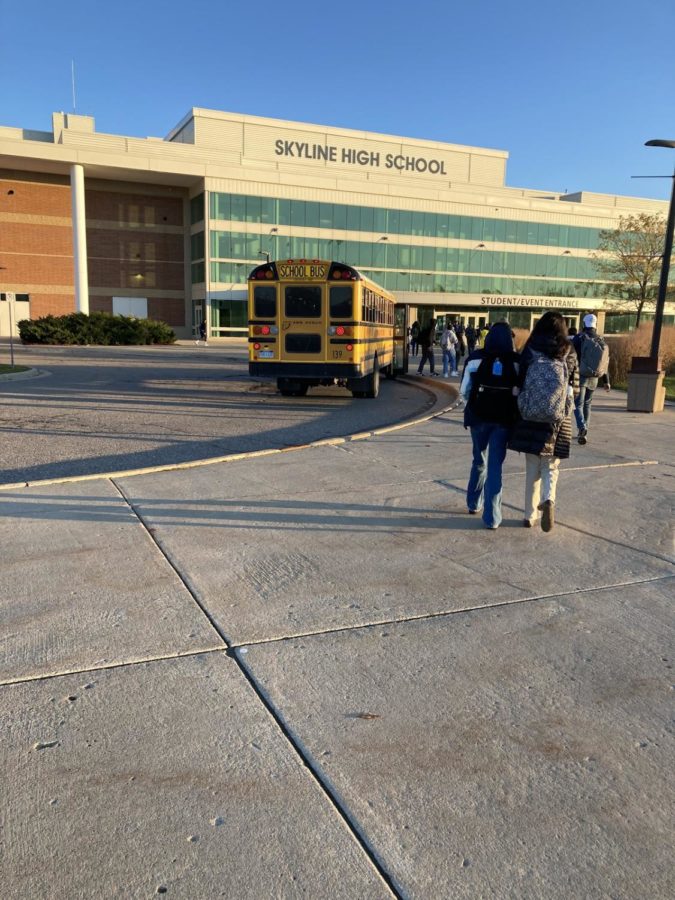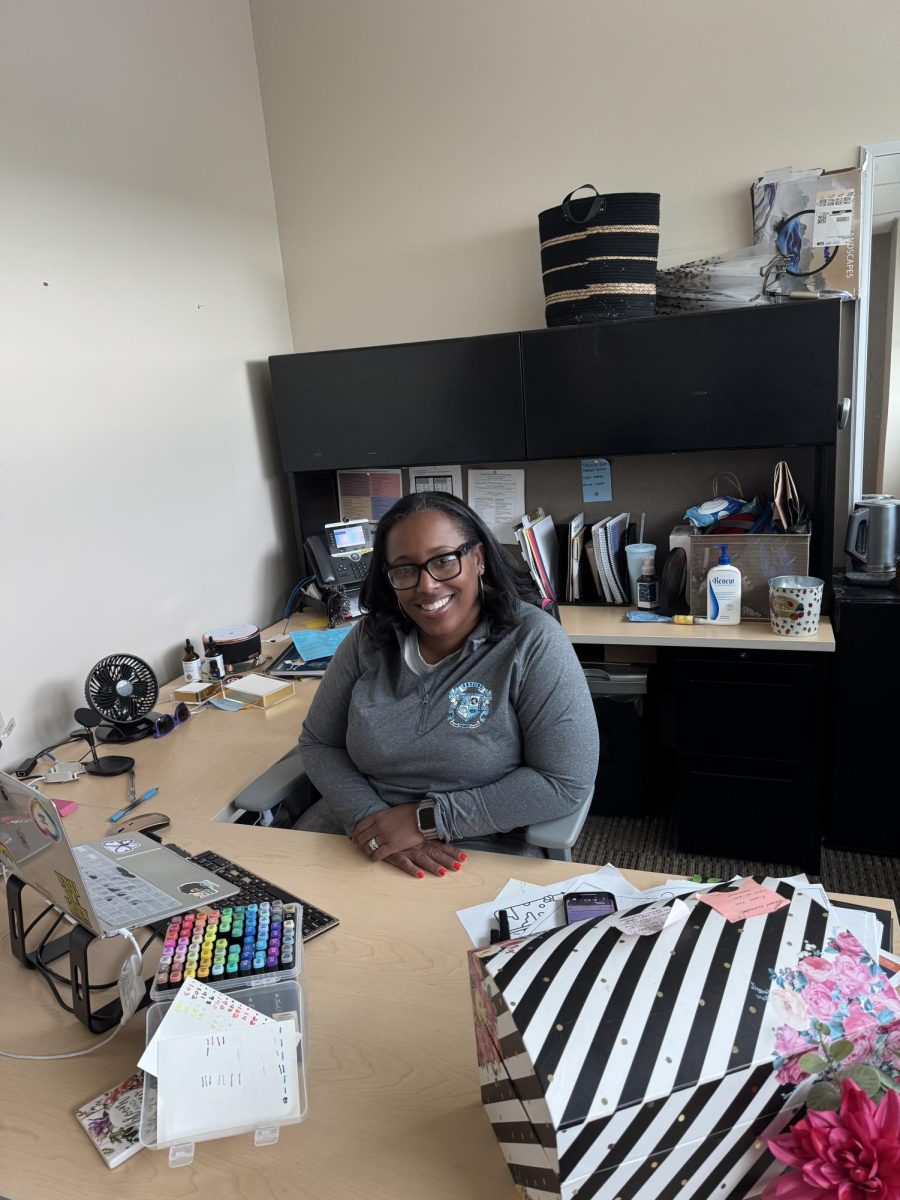As of Monday, January 31st there were 14 bus route suspensions all around Ann Arbor, Michigan. These suspensions, set to end Friday, February 11th, will negatively impact many families and students.
“Illness among transportation staff and their families, and the ongoing labor shortage of drivers along with the current challenges tied to the current surge in COVID-19 cases have resulted in this action,” Ann Arbor Public Schools (AAPS) said in an email sent out to families on January 27th.
Durham School Services, the school bus provider for AAPS , has been struggling through a staff shortage this 2021-2022 school year. In response, Durham has gotten creative and students and their families have been forced to be flexible.
“The lack of drivers has been debilitating,” says Ed Gallagher, Transportation Manager with Durham for AAPS. “Covid-19 is the primary reason [for the staffing shortage]. Many employees simply chose not to return when we finally reopened. We have gained and lost several drivers to competition.”
Executive Director of AAPS Student and School Safety Liz Margolis states, “We have been actively recruiting drivers since last summer, increasing pay and offering incentives. While we have been able to hire a few new drivers, as with other industries, Durham has not been able to hire enough to fully staff all of the bus routes.”
Margolis works collaboratively with Durham Transportation to ensure that students have a reliable way of getting to school. Their aim is to only suspend bus routes from schools that have additional routes to transport students. In addition, “we do not select [suspend] routes that serve students with special needs or the preschool bus routes,” says Margolis. Suspensions are communicated with the bus riders and last for two weeks, but that can change with driver availability. “We track daily the number of drivers and monitors who are not able to work and balance that against the number of routes that are not able to be covered so this is a fluid situation.”
Public school districts are not required by law to offer bus transportation to students. And yet, Margolis added, “we still fully understand and take seriously that route suspensions for students do negatively impact some students and families. We encourage families to work together to form carpools or take public transit, if it is available.”
In solving their transportation issues, AAPS does not allow students to choose to ride on routes other than those assigned to them due to capacity and safety concerns. One new solution this year has been the combining of routes between middle and high school students, which allows for one driver to cover essentially two routes. However, some students complain these changes have made their buses more crowded. “After the Forsythe stop was added, there was no longer any social distancing on the bus because there were literally no empty seats,” says Isaac Fraga, sophomore at Skyline, whose bus also picks up students from Forsythe Middle School in the afternoon. “High school students are forced to sit two people per seat and in the very back of the bus.”
According to Gallagher, “The number of students on each bus does greatly vary and high school buses typically see less ridership than elementary and middle school buses.”
Despite additional students on each route, AAPS responded that buses are “not to the point of being overcrowded beyond available seating,” says Liz Margolis, Executive Director of Student and School Safety for AAPS. “We have never guaranteed social distancing on buses. It would be impossible due to the number of available buses and drivers.”
Other Covid-19 mitigation measures have been integrated into busing services. “We have put in strict masking, air flow, hand sanitizer requirements, as well as seating charts,” says Margolis.
In many cases, changing bus routes have made pick up times earlier in the morning, resulting in students getting up earlier and losing out on valuable sleep.
“The bus now comes at 7:32 am,” says Katherine Yuan, a 7th grader at Forsythe Middle School. “It used to come at 7:44.”
Margolis states that “AAPS has made a commitment to no pick ups before 7 am. We are able to do that except for very few cases due to the length of the trip, especially when families live at the edges of the district, which covers 125 square miles.”
Changes to bus routes, especially those now combined with middle and high schoolers, have also caused students to be dropped off later in the afternoon. This can cut into time for homework, family responsibilities, and other after school commitments.
“Before the Forsythe stop was added I would get home around 3:15,” says Fraga. “But [now that] the stop is added, I arrive home anytime between 3:35-3:40.”
After school, the range of drop off times begins shortly after school ends at 2:51 pm to almost an hour later.
“The Skyline bus routes drop off between 3:03 and 3:45 pm,” says Margolis. “The exception is bus 28, which stops the furthest north from Skyline. Its last stop is 4:19 pm at Delhi Rd.”
Buses have also shown a pattern of running late throughout the school year. Even though they mostly only run a few minutes late, this can cause students to arrive late to school. “My [buses] have been late almost every day, in the morning and in the afternoon,” says Riley Mahan, sophomore at Skyline. “It’s usually late by 4-7 minutes, but we usually get there when we are supposed to walk to first hour.”
There have been a few occasions this school year in which some buses were up to an hour late, but “we notify families when this occurs,” says Margolis.
Inconsistencies in pick up times and potential for late buses puts more pressure on parents to find ways to drive their students to school, which sometimes is not a feasible option. If a student’s bus were to run late and their parents could not drive them to school at the last minute, that student would have no choice but to miss out on valuable learning time in the first part of the school day.
“The only other way for me to get to and from school would be if my mom drove me,” says Fraga. “But this overcomplicates things for her because she has to work. It is too time-consuming for her to come to school and wait in the parent pick up/drop off lines.”
Gallagher, and all of Durham School Services, sympathizes with families impacted by busing issues this year. “We always try to keep in mind that a late bus certainly puts a strain on parents who have a schedule or routine to maintain,” says Gallagher.
AAPS is working closely with Durham School Services to solve these issues and improve the quality of the busing services being provided to families. “AAPS and Durham Transportation most definitely understand the hardships that the bus service has caused families this year,” explains Margolis. “This is a national problem. Working with Durham we have incentives in place including signing bonuses, increased hourly pay, and additional guaranteed hours to attract drivers. The level of service has not been to our standard but we are working hard to rectify this.”







